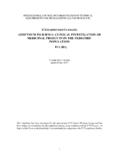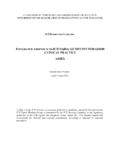Transcription of Frequent ly Asked Q uestions d Recommendation …
1 1234567 Q4B: EvaThe Q4B Ex1. What is PD2. What is Q4B3. Why is Q4B4. How does in5. How do regu6. When can Q7. Can harmonInternational Conaluation anxpert Working GG? ..B? ..B necessary? ..ndustry use theulators use the Q4B Annexes benised pharmaconference on HarmoICH SecretariatTend RecommGroup Q4B Annexes? Q4B Annexes?e used? ..opoeial text be conisation of Technt, Chemin Louis-Dunelephone: +41 (22) 3admin@Frequentmendation od a set of frequeerstand the use ..considered inter nical Requirements nant 15, Box 1338 32 06, http://www tly Asked Q of Pharmac ently Asked que and implication ent Date: 26 Apable of Conte ..rchangeable in s for Registration o95, 1211 Geneva 2x: +41 (22) 338 32 Questions copoeial Teestions to help un of these documpril 2012 ent .. countries/regio of Pharmaceuticals20, Switzerland 30 xts for Useusers of the Q4 Bments.
2 Ons outside of ICs for Human Use e in the ICHB Guideline ..H Regions d Annexes to .. 2 .. 2 .. 3 .. 3 .. 4 .. 5 .. 6 ICH Q4B Frequently Asked Questions Document Document Date : 26 April 2012 2 1. What is PDG? The Pharmacopoeial Discussion Group (PDG) was formed in 1989 with representatives from the European Directorate for the Quality of Medicines (EDQM)/European Pharmacopoeia (Ph. Eur.), United States Pharmacopoeia (USP), and Japanese Pharmacopoeia (JP) to work on harmonising excipient monographs and general chapters in the pharmacopoeias. In 2001, the PDG welcomed the World Health Organization (WHO) as an observer. While not part of ICH, the PDG typically met in conjunction with the ICH and provides the ICH Steering Committee with reports of its harmonisation progress. The PDG considers proposals made by national and regional associations of manufacturers of pharmaceutical products and excipients in order to select general methods of analysis and excipient monographs for addition to its harmonisation work programme.
3 To promote these exchanges and synergy, since 2001, the PDG has organised, upon request, hearings for representatives of the pharmaceutical and excipient industries. At all times, PDG works to maintain an optimal level of science consistent with protection of the public health. Each pharmacopoeia is responsible for a programme of international harmonisation. Each text drafted by the three co-ordinating pharmacopoeias is published for public comment at PDG Stage 4 in each of their respective forums. Please refer to the Working Procedures of the PDG, for further information. See the pertinent pharmacopoeial website. 2. What is Q4B? Q4B is an ICH Expert Working Group (EWG) established in November 2003. As with all of the ICH EWGs, it is composed of regulators and industry representatives of the three ICH regions, with some observers.
4 The subject of Q4B is "Evaluation and Recommendation of Pharmacopoeial Texts for Use in the ICH Regions". The texts evaluated by Q4B are primarily the result of harmonisation by the Pharmacopoeial Discussion Group (PDG). The aim of Q4B is to recommend that the texts published in the three pharmacopoeias (Ph. Eur., JP and USP) can be used as interchangeable. Texts determined to be interchangeable, can be used by industry and accepted by the regulators of the three regions. The Recommendation of interchangeability is provided in a series of topic-specific Annexes as published on the ICH website ( ). The initial scope, as approved by the ICH Steering Committee, was composed of the 10 general chapters mentioned in the ICH Guideline Q6A on specifications, subsequently expanded with 5 additional chapters. The scope does not include any excipient, drug substance, or drug product monographs.
5 The overall process of Pharmacopoeial Harmonisation (Q4A: PDG) associated with the process for evaluation of interchangeability (Q4B EWG) defines the current framework of ICH Q4. ICH Q4B Frequently Asked Questions Document Document Date : 26 April 2012 3 3. Why is Q4B necessary? One of the ultimate goals for the pharmaceutical industry is the ability to generate analytical data by a single test method which is acceptable in each region. This goal of interchangeable test methods has not been achieved, and companies have been forced to perform multiple tests due to lack of harmonisation among the pharmacopoeias. One of the approaches taken to address this issue is the effort by the Pharmacopoeial Discussion Group (PDG) for the harmonisation of JP, Ph. Eur., and USP. The PDG-harmonised text would be interchangeable if implemented without change in each pharmacopoeia.
6 In reality, some modifications are usually made to the harmonised text as it is incorporated into each pharmacopoeia, due to regional requirements. Therefore, it is crucial for pharmaceutical companies to assess the acceptability of data obtained per a particular pharmacopoeia in the other regions, or determine the necessity of repeating the test per the regional pharmacopoeia requirement. If the Q4B process were not in place, pharmaceutical companies would have to investigate the similarity or differences among the pharmacopoeias and judge the interchangeability of the data by themselves. The acceptability to the regulatory agencies of such judgment by the companies is not clear until the submission is made, and hence the companies take on a larger workload and potential regulatory risks. Q4B compares the PDG-harmonised text with each pharmacopoeial text as officially published and evaluates the interchangeability based on a review of any differences from the PDG-harmonised text.
7 As an outcome of Q4B evaluation, each topic-specific Annex indicates whether and how the regulatory authorities will accept the chapters as interchangeable when the Annex is implemented in each region. The Annex also states the conditions for interchangeability, which helps the pharmaceutical companies to understand the points to be noted during drug development, at the time of submission, and for compliance during product lifecycle. In addition, Q4B comments facilitate PDG in revisiting local requirements or non-harmonised attributes, with the possibility of eliminating these residual differences. 4. How does industry use the Q4B Annexes? Implementation of the Q4B Annexes is intended to avoid redundant testing by industry. A pharmaceutical manufacturer who follows the conditions (if any) detailed in Section 2 of a particular Q4B Annex is assured that the pharmacopoeial chapters listed in the Annex may be used as interchangeable to ensure compliance with pharmacopoeial and regulatory requirements in the countries/regions listed in Section 4 of the Annex.
8 A status of "interchangeable" in the Q4B Annex means that any of the official texts from JP, Ph. Eur., or USP can be substituted one for the other (appropriately referenced) in the ICH regions for purposes of the pharmaceutical registration/approval process. Using any of the interchangeable methods, an analyst will reach the same accept or reject decisions irrespective of which Pharmacopoeial Discussion Group (PDG) pharmacopoeia is used. The Q4B Annexes give guidance to industry for registration and implementation of the harmonised pharmacopoeial chapters. Section 2 of the Annexes contains the Q4B Recommendation of interchangeability, and may include specific considerations regarding the ICH Q4B Frequently Asked Questions Document Document Date : 26 April 2012 4 pharmacopoeial chapters.
9 If there are no considerations listed in Section 2 of the Annex, then the interchangeability of the chapters is without condition. It should be noted that any conditions contained in Section 2 of the Annexes do not introduce additional requirements beyond the details already contained in the harmonised chapters. Rather, the conditions in Section 2 provide guidance on details that must be included in drug product registrations, as well as information needed by testing laboratories to enable use of the harmonised chapters, as a result of non-harmonised sections of the pharmacopoeial text and/or details not covered in the text. For example, in Q4B Annex 1 (Residue on Ignition/Sulphated Ash General Chapter), one of the conditions in Section indicates that the appropriate sample weight should be justified and the sample weight and acceptance criteria should be specified in the application dossier, unless otherwise specified in a monograph.
10 A second condition states that the muffle furnace should be appropriately calibrated to ensure compliance with regional GMP requirements. The first condition is necessary in the Q4B Annex due to the absence of information in the harmonised general chapters (sample weight and acceptance criteria). The second condition addresses residual differences that remain after publication of the harmonised chapters in each of the individual pharmacopoeias (calibration of the muffle furnace). Similarly, the conditions listed in Q4B Annex 5 (Disintegration Test General Chapter) are necessary to provide regulatory clarification regarding non-harmonised sections in the chapters for specific dosage forms, along with a statement of information that must be included in the application dossier to enable use of the chapters.
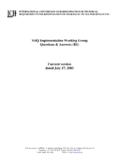
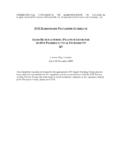
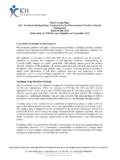
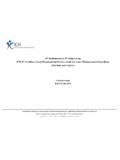
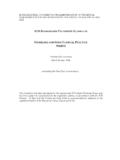
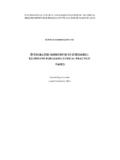
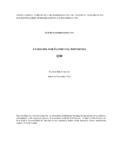
![[ICH E2F] [EXAMPLE DSUR – PHASE III …](/cache/preview/1/3/5/f/e/1/c/f/thumb-135fe1cf2cdb82799c462ad0ea089c48.jpg)
